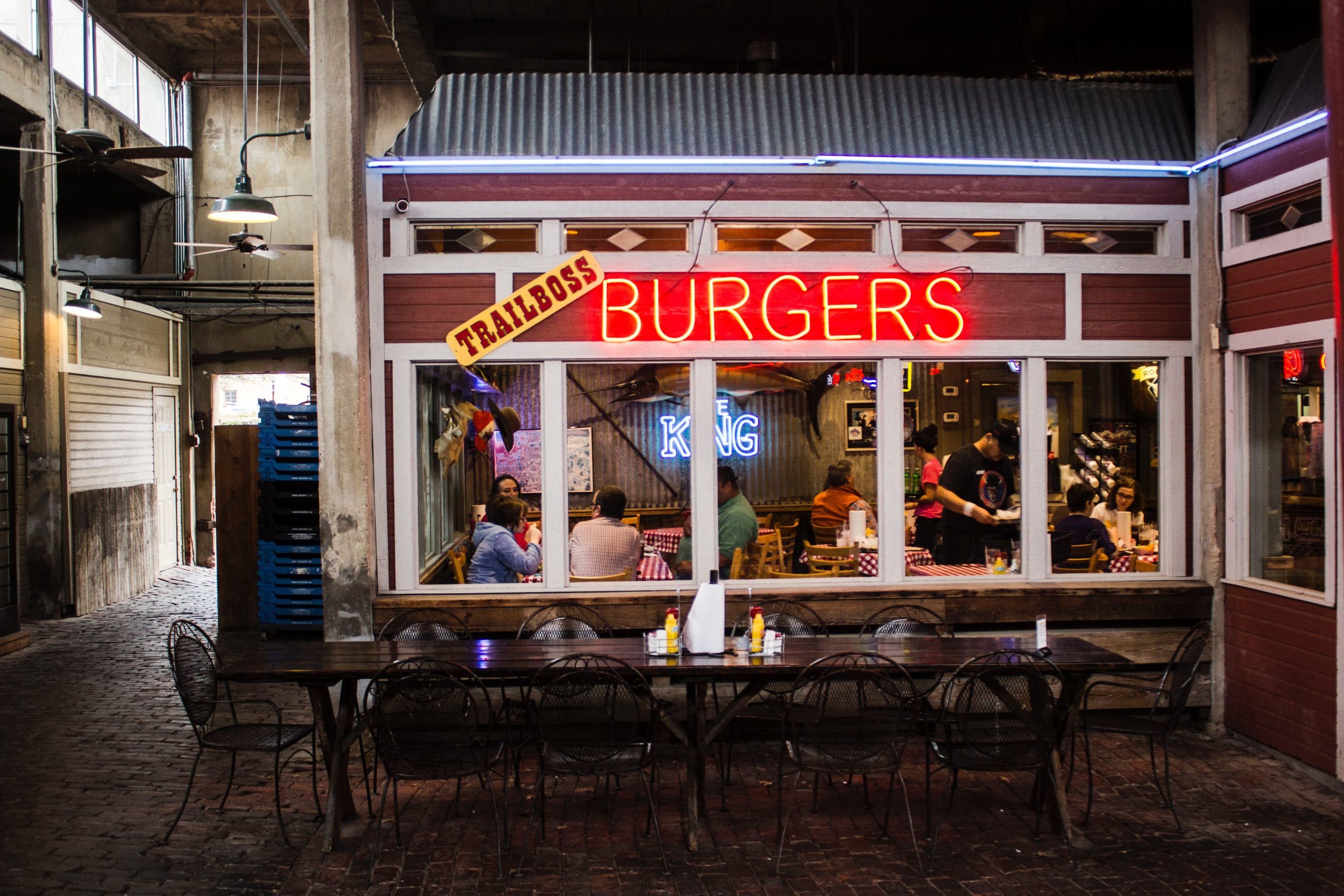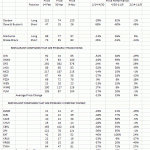These days, investors are more typically ETFs which have to own broad swaths of particular industries, as well as institutions that are fighting for day to day performance. The result is that all stocks within an industry have a strong tendency to move together, and it takes a long time for fundamentals to prevail.
INVESTING IN PUBLICLY HELD RESTAURANT COMPANIES – WHAT DID THE PANDEMIC TEACH US?
By Roger Lipton 
The dust is beginning to settle, especially with a vaccine now in view. The stocks within the restaurant industry made a huge move on Monday, going a long way to recovering from the severe decline that started at the end of February. We are comparing prices from before the pandemic to the current prices. We published a chart on October 22nd that attempted to compare the current valuations (relative to reasonable expectations) to those before the pandemic began. That exercise revealed some interesting “inefficiencies” in terms of valuations. Shake Shack screamed “overvaluation” so we wrote first about that Company. Of course, it stands to reason that the apparently most overvalued situation would make one of the largest upward moves in today’s news about a possible vaccine. Thank goodness we are not short this volatile situation, which our experience has taught us is a nerve wracking exericise in a Federal Reserve supported easy money environment.
Before we get into a broader discussion of the last seven or eight months, there’s a lesson to be learned by a conversation we had with one of our money managing friends. Back on April 30th, he asked for our suggestion as to a “paired trade” in the restaurant industry. You know… one name that was well positioned and would outperform on the upside, paired with the short sale of a weaker company that would not do as well. The theory, which fifty years ago spawned today’s multi-trillion dollar hedge fund industry, is that equal amounts invested in well chosen offsetting positions would be market neutral yet hopefully outperform the general market over time. It stands to reason, of course, that the stock price will follow the fundamental performance over time, and the good companies will fundamentally do better than the weaker participants. Ideally the long position will go up and the short position will go down, profiting on both sides in a neutral market. That was often the case decades ago, when stock ownership was more broadly spread among individuals and institutions who were picking Individual stocks. These days, investors are more typically ETFs which have to own broad swaths of particular industries, as well as institutions that are fighting for day to day performance. The result is that all stocks within an industry have a strong tendency to move together, and it takes a long time for fundamentals to prevail. Adding to this “inefficiency” is that multi-billion dollar hedge funds maintain large short positions, managed with a hair trigger to limit losses if even short term news is announced. That’s why on a day like Monday when the general stock market makes a really big move, the stocks with the largest short positions go up the most, whether the specific fundamentals justify that price action or not. We could go on….but suffice to say that short term trading has become very difficult in recent years.
As an illustration: relative to the request for a couple of paired trades back in April, after we suggested that this approach has become pretty difficult, we provided a couple of apparently compelling suggestions. We paired the highly respected Darden (DRI) on the long side with the enormously challenged Dave & Buster’s (PLAY) as a compensating short. Surely DRI would outperform PLAY, especially with the predictable health concerns of the public, even after the worst of the pandemic. The chart below shows in retrospect that by 4/30 PLAY, which had declined by 68% between 2/14 and 4/30, was already “oversold”. The profit in Darden (62%) from 4/30 to 11/9 (today) was almost exactly equal to the loss (60%) on the PLAY short. So that trade hasn’t worked yet. It is worth noting that PLAY would have worked well from 2/14 (before the pandemic) to 11/9 (45% profit), against a 2% loss in DRI, but it was already too late by 4/30.
The second presumably intelligent paired trade I suggested on 4/30 was to go long Starbucks (SBUX) along with a short sale of Shake Shack (SHAK). Who could argue with a worldwide brand selling an addictive product (with major growth ahead in China), offset by the short sale of a ridiculously valued hamburger chain whose business model couldn’t be designed more poorly to cope with a pandemic. SHAK had no drive-thrus, high rents, resort locations, city locations inhibited, etc.etc. You can foresee the result. Between 4/30 and 11/9, an investor would have made 26% on his long SBUX position, and lost 51% on the SHAK short. Even from pre-pandemic 2/14 until 11/9, right through the pandemic, SBUX gained 9%, but the SHAK short lost 14%. Every time we write about SHAK, we emphasize our respect for their management, but they are not magicians, and the store level culture cannot force customers to come to the mall or bring NYC stores back to the $7M level of a few years ago.
So…be careful “trading” out there.
On a broader level, we tabulated, as shown below, the price changes among the “darlings” of the institutional investing set, the asset light, free cash flow pursuing pure franchising companies. Without the operating “risk” of running restaurants, they can leverage up their balance sheets to 5-6x trailing EBITDA in a historically low interest rate environment, often with the intent of declaring special dividends to shareholders.
The chart below shows that the ten fairly pure franchising restaurant companies declined by a relatively modest 12% from 2/14 to 4/30. The average was helped quite a bit by Domino’s, Papa John’s and Wingstop which had the twin benefit of delivery and pure franchising. Even eliminating those three names, the seven remaining companies were down 24%, a lot less than the 37% decline shown by the company operated restaurant chains shown below. The franchising companies rebounded 23% between 4/30 and 11/9, more than recouping the worst of the pandemic, and showing a 6% gain through the cycle.
The chains that are primarily operating company stores, with all the operating challenges, have fared worse, also shown below. The stocks were down as a group by 37% by 4/30, recovered 48% by 11/9 and were down 8% through the cycle.
CONCLUSION:
Avoid “paired trades” on a short term basis. It’s just too tough.
For longer term investing, we too, in this environment would favor the pure franchisors, in general, even at their high multiples of earnings and cash flow, and historically high debt/EBITDA levels. We don’t see anything on the economic horizon that will reduce the availability of low interest rate financing. The operating challenges for those companies with company stores are not going away. It’s of course true that franchisors cannot prosper unless their franchisees are doing well, and franchisors will likely have to do more than in the past to support their franchisees but they can borrow at low rates and could even pass through part of that low cost capital to their franchisees.
About Roger Lipton:
Roger is an investment professional with over 4 decades of experience specializing in chain restaurants and retailers, as well as macro-economic and monetary developments. After earning a BSME from R.P.I. and MBA from Harvard, and working as an auditor with Price, Waterhouse, he began following the restaurant industry as well as the gold mining industry. While he originally followed companies such as Church’s Fried Chicken, Morrison’s Cafeterias and others, over the years he invested in companies such as Panera Bread and shorted companies such as Boston Chicken (as described in Chain Leader Magazine to the left) .
He also invested in gold mining stocks and studied the work of Harry Browne, the world famous author and economist, who predicted the 2000% move in the price of gold in the 1970s. In this regard, Roger has republished the world famous first book of Harry Browne, and offers it free with each subscription to this website.


